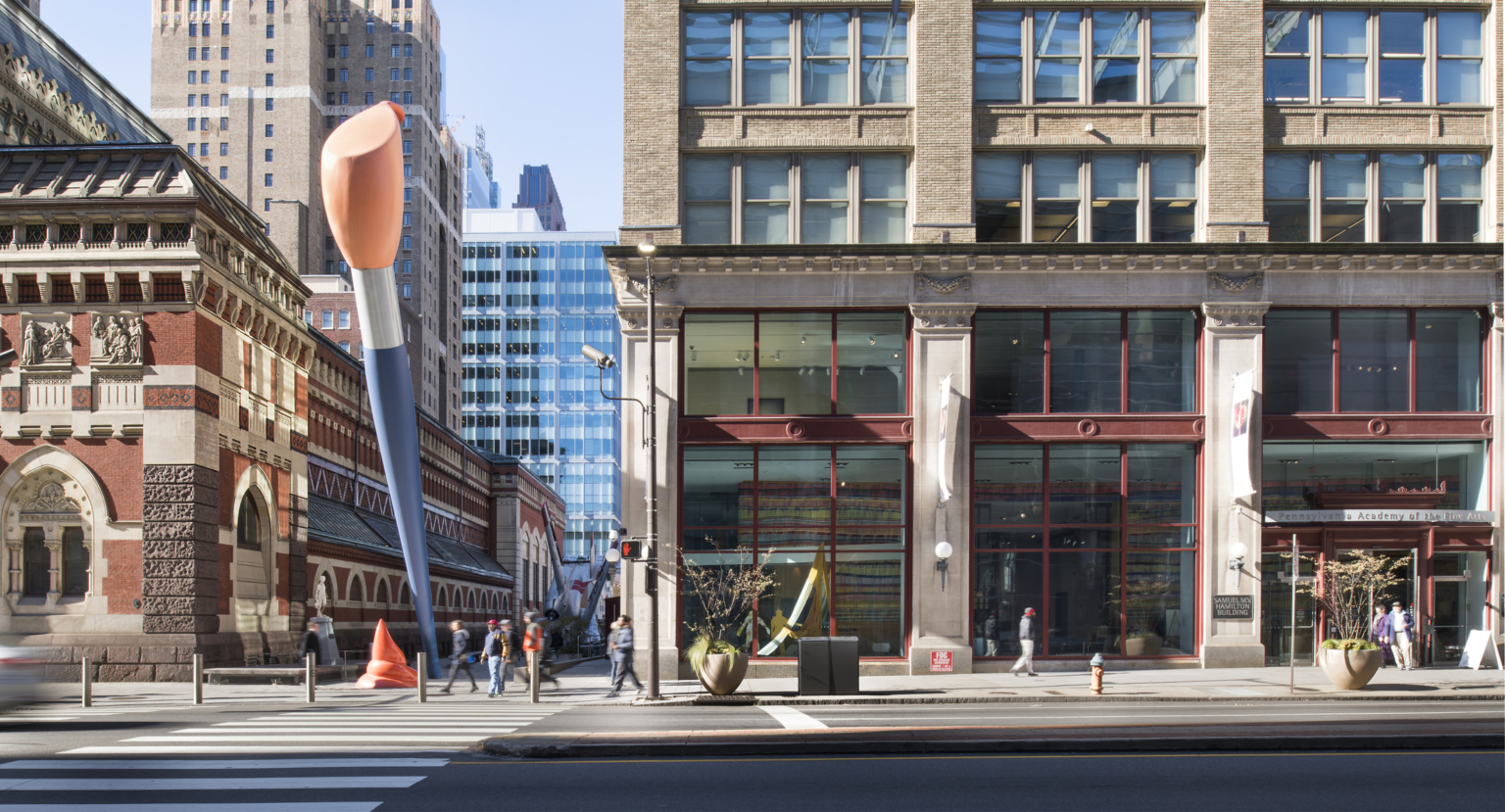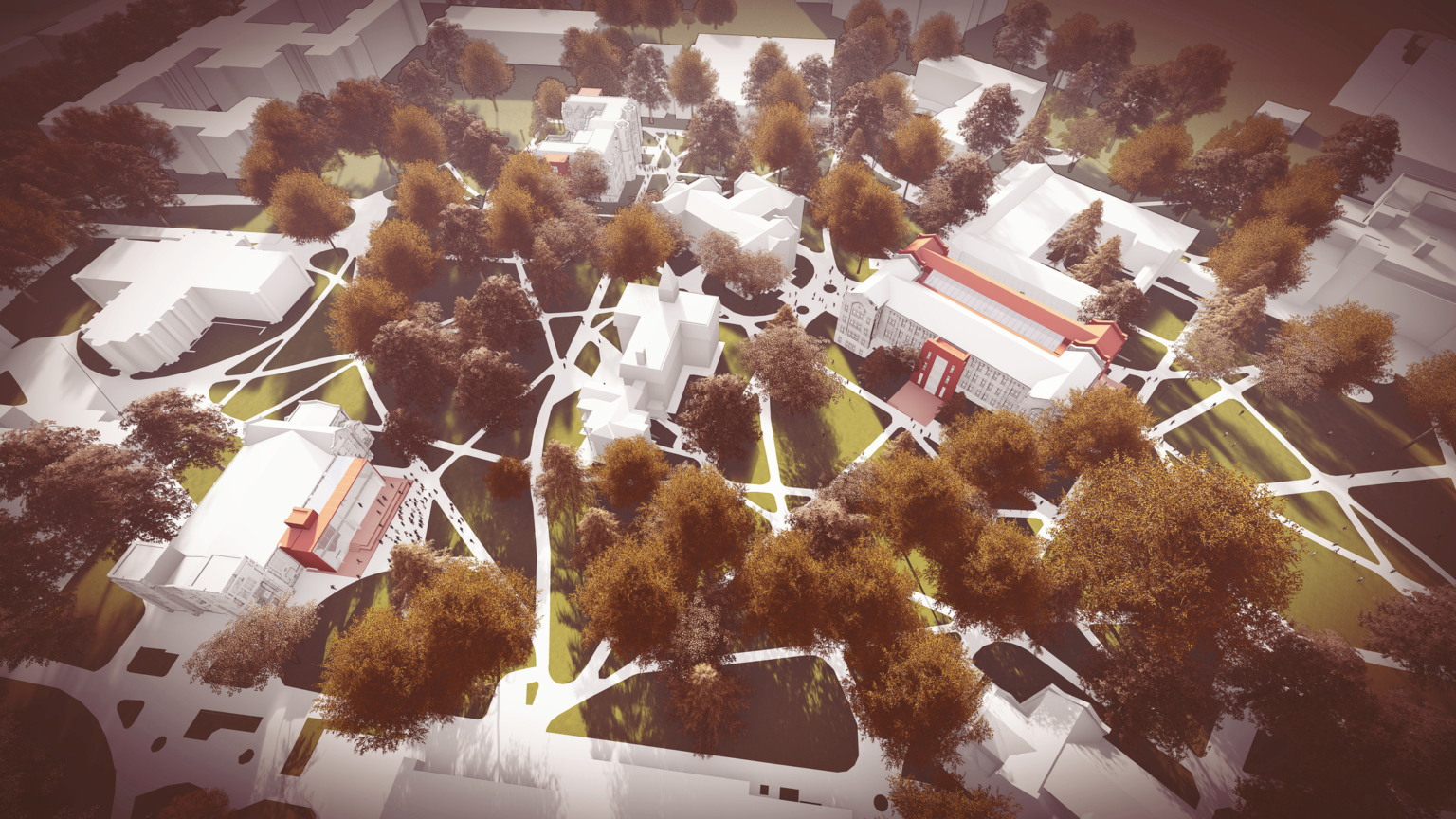
First Net-Zero Dining Facility in the Country
Project Location
Swarthmore, PA
Client
Swarthmore College
Area
71,500 SF
Services
Architecture, engineering, high-performance design, and more
The landmark Sharples Dining Hall has played a significant role in shaping the Swarthmore student experience since 1964. The beloved facility became too small to comfortably house the growing student body and institution leadership wanted a solution that reflects the College’s student life and food service values. Our design team sought perspectives and insights through in-depth .
The process included campus immersion by the planning and design team via student, faculty, staff, and administration interviews; student focus groups; town hall meetings; and campus workshops. The resulting design concept will be the first net-zero dining facility in the country. The community commons space will have enhanced opportunities for socialization that respects the historic character while elevating student life for future generations. A diverse range of spaces is available for multiple uses – from individual study to small group or large team activities – and integrated technology allows for continuous connectivity throughout the building.
We provided architectural programming, sustainability programming, lighting and low-voltage programming, campus engagement, architecture, interior design, electrical engineering, mechanical engineering, and high-performance design.
Program
Together, the new dining hall and community commons will serve as a hub of activity and a cornerstone for social gathering on campus. The 800-seat dining hall will offer 10 robust food platforms, including allergy-aware, vegan, and international. Retail dining will be incorporated in the existing facility to activate the community commons and provide late-night dining options. Various sustainable design solutions meet the college’s desire for a net zero building, including energy reduction and production, zero waste options, biophilic design, and local food sourcing.
Campus Engagement
We conducted extensive, in-depth engagement activities with the campus community – including students, faculty, and staff – on the Swarthmore College campus to develop a framework and goals for the engagement effort. More than 55 meetings at various campus locations with students, faculty, and staff, including open sessions and workshops focused on sustainability, food service, and campus engineering. We also personally conducted 505 individual interviews with students from a cross-section of class years, conducted in-depth workshops, and facilitated focus group discussions. These engagement exercises gave the design team ample opportunity to interact with a large portion of the student body and numerous faculty and staff.
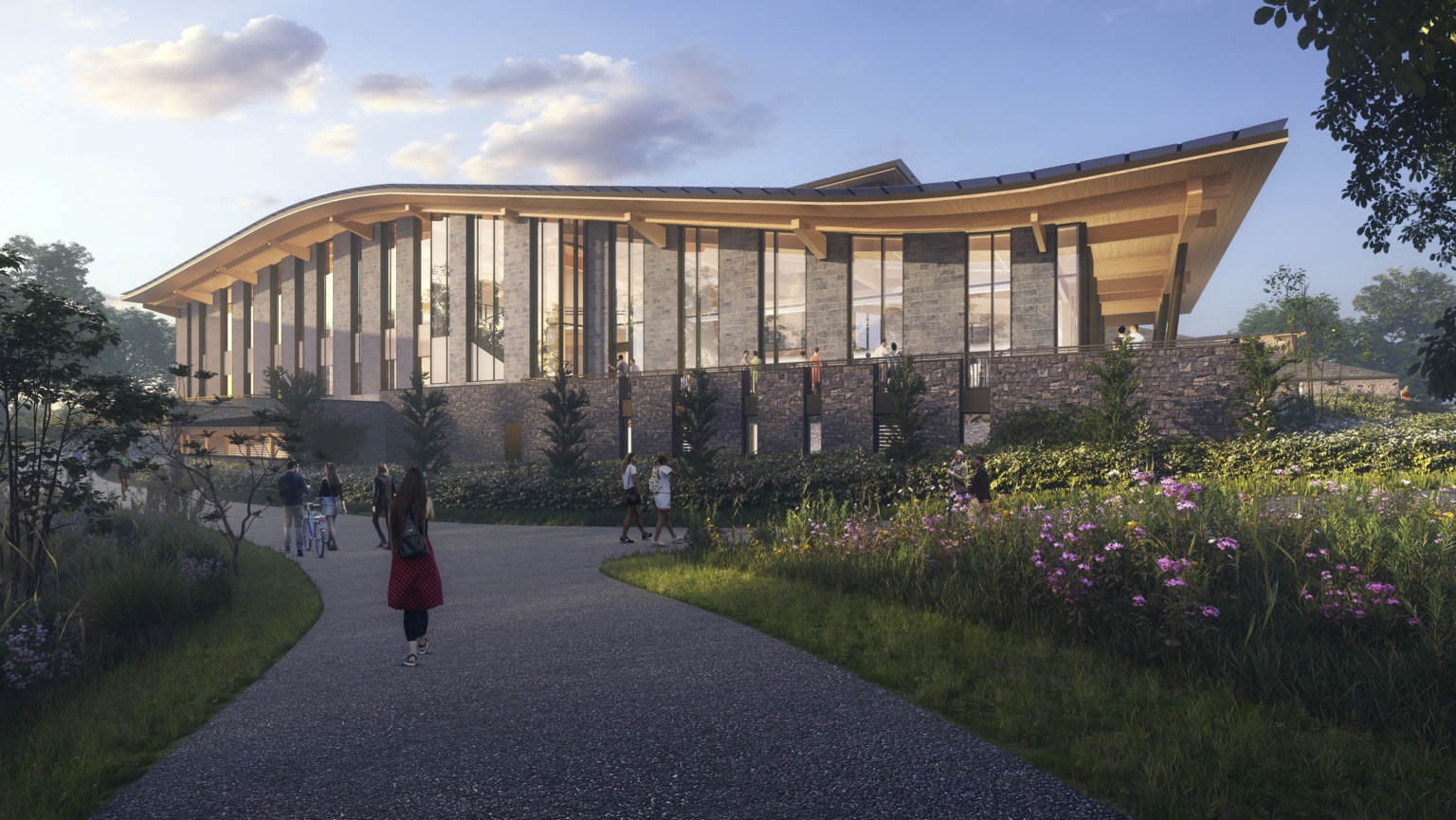
The design team sought the campus community’s perspectives and insights on the campus culture, physical assets, and needs and desires for student life and food services.
Creating Community
Our student and campus engagement revealed students’ need for a place of refuge from the rigors of their academic schedules and a place to socialize without pressure. In addition, a passion for community and academics are defining characteristics of Swarthmore students. Currently, the campus lacks a unified and centralized social space for students; they often socialize in classrooms, libraries, and residence halls.
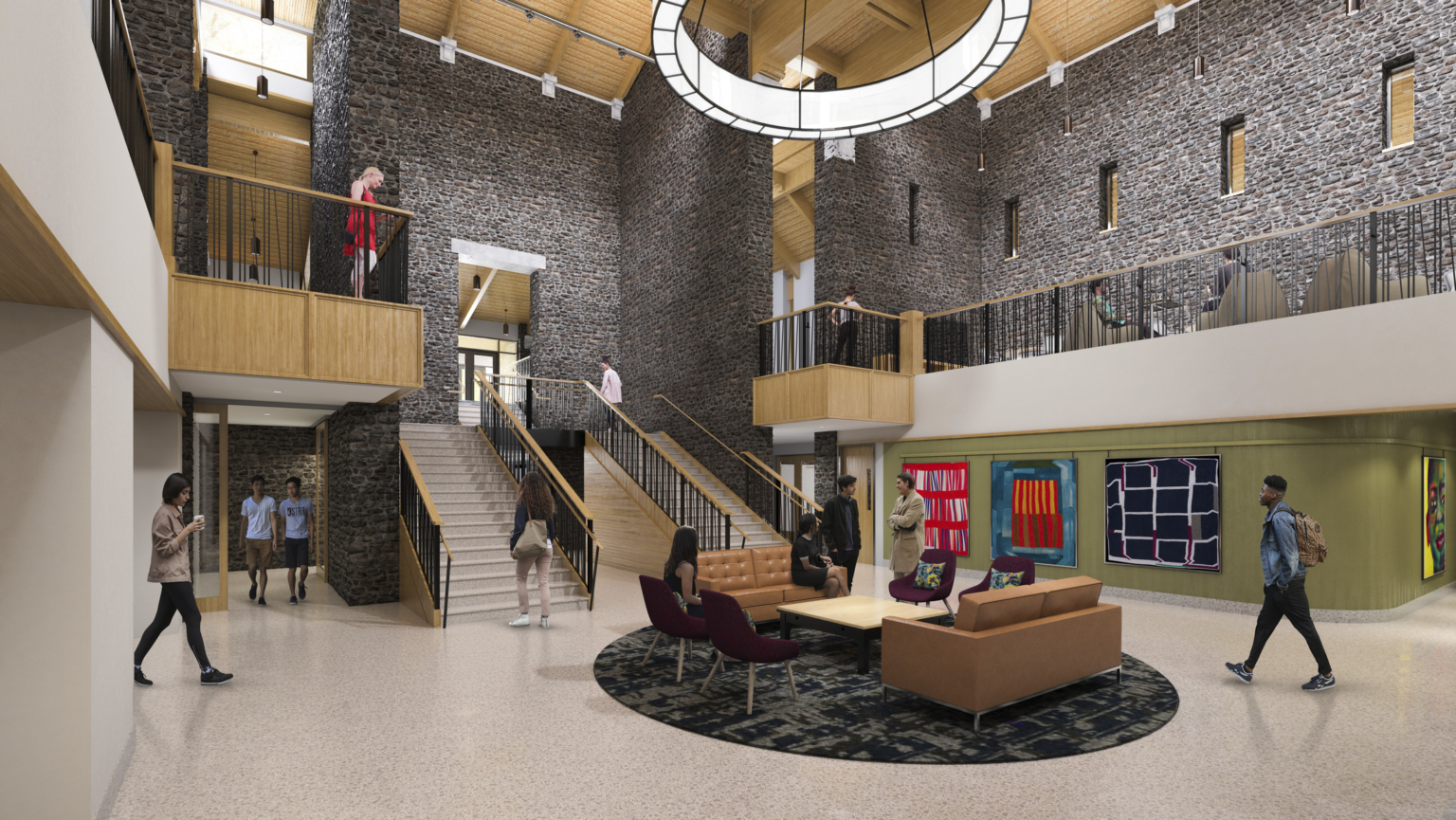
Swarthmore peers, faculty, and staff form a diverse, thriving community. They seek a place to celebrate diversity.
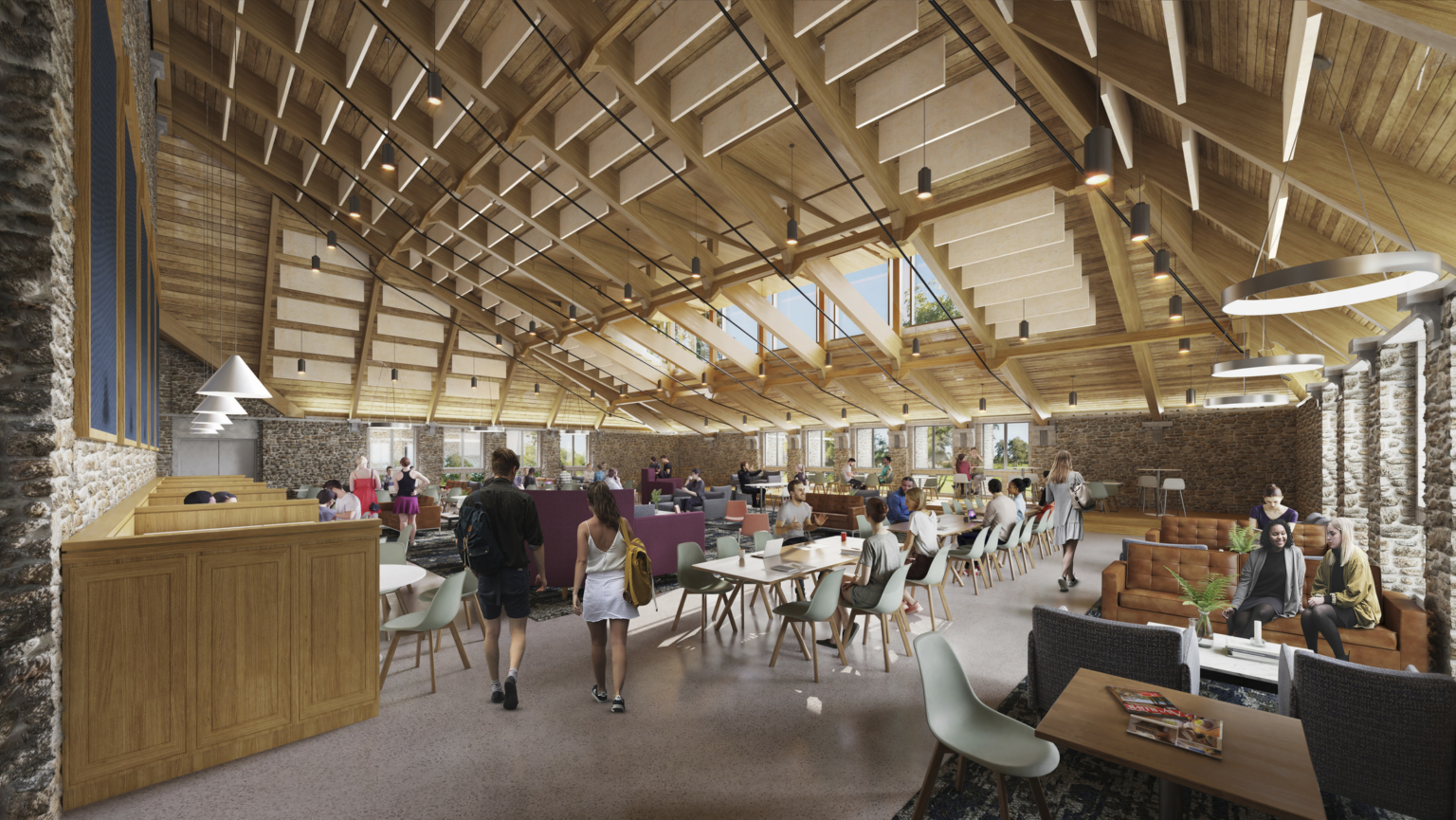
Classrooms serve a dual function as both classroom and group collaboration space.
Reimagined Dining
Students, faculty, and staff seek food service options that are responsive to dietary needs and restrictions, and reflect sustainable practices. With the level of student and faculty diversity at Swarthmore College – over 14% of the student body represent 35 countries outside the U.S. – the dietary range challenges the Swarthmore food service team to augment the menu and canvas regional resources for farm-to-table resources. In addition, an all-electric cook line is impacting menu options. To add to performance challenges, the Swarthmore’s food service team set an aspirational goal for the new menu to consist of 40% plant-based offerings by opening day. Retail dining will be incorporated in the existing facility to activate the community commons and provide late night dining options for students.
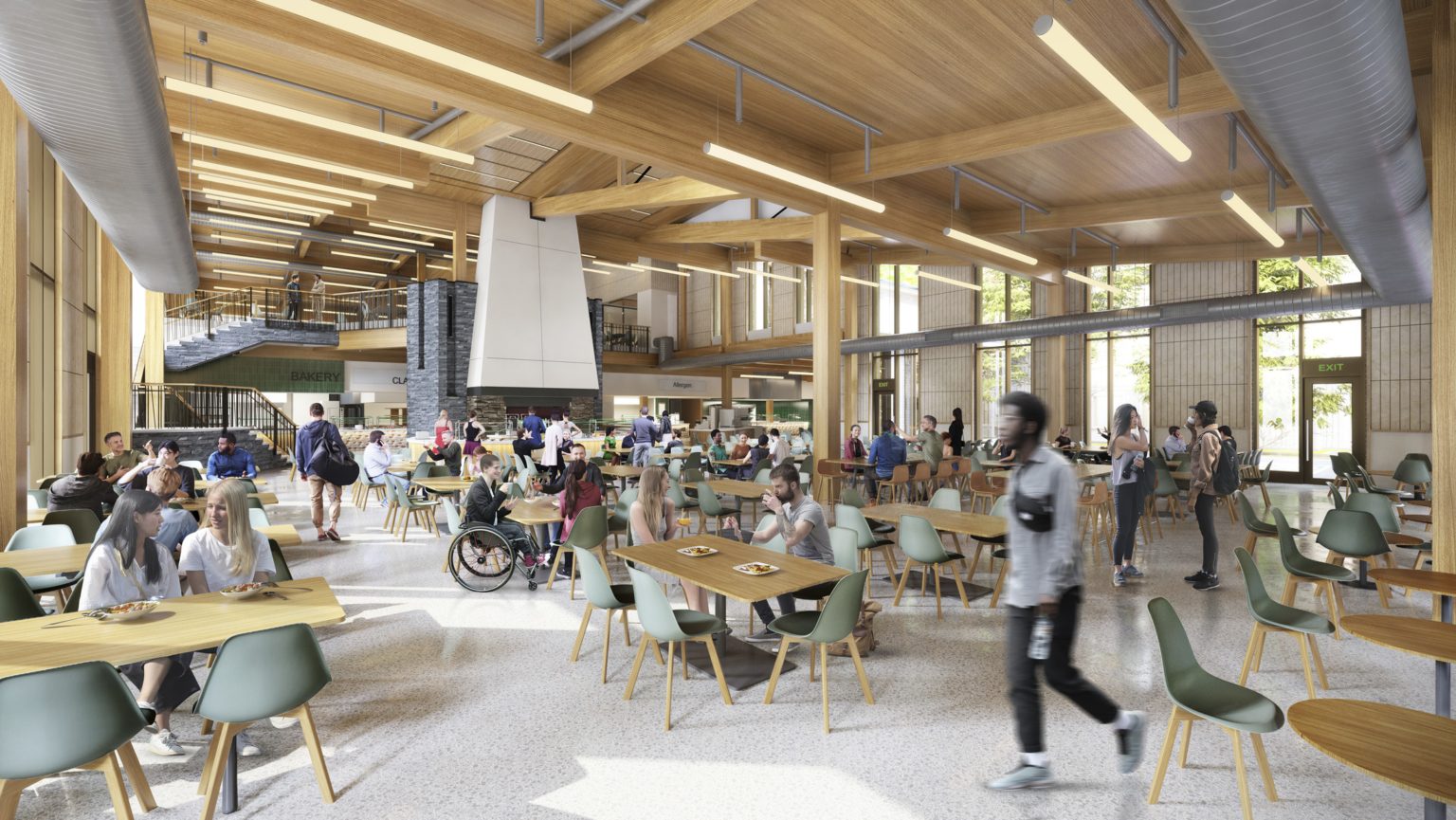
The new facility includes 10 robust food platforms, including allergy aware, vegan, halal, and international.
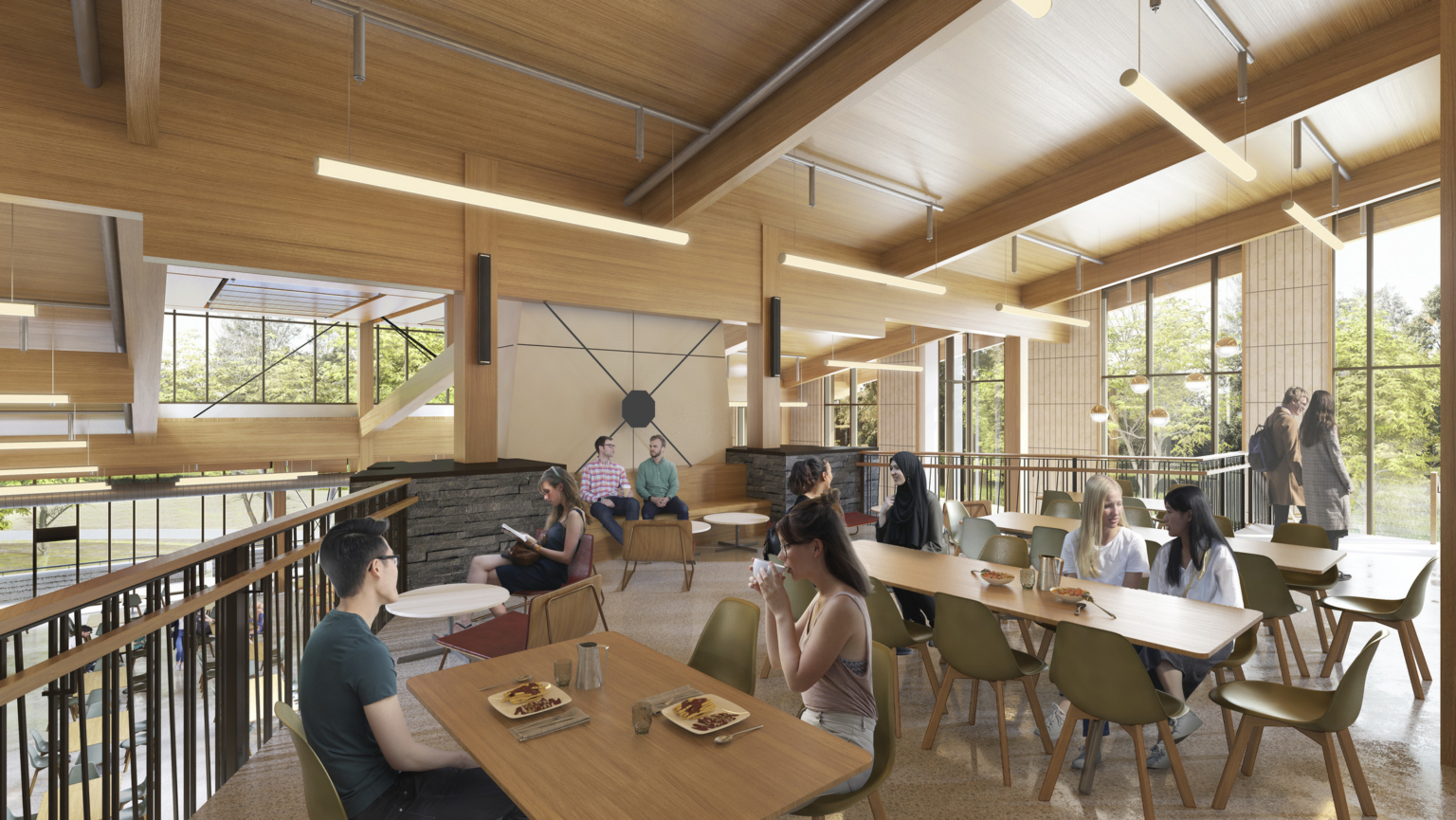
On-line ordering with a grab-n-go area is designed to accommodate 20% of daily meals.
Maintaining a Sense of Place
Sharples currently poses major challenges to accessibility and a modern food service operation. Preserving the successful aspects of the building and mending the problematic elements will be critical. Recognizing the value of the arboretum to Swarthmore’s campus and emphasizing connections to nature throughout the new facility will improve health, wellness, and happiness of the campus community.

Sharples is an iconic building on campus with beloved characteristics, such as its heavy timber and stone walls.
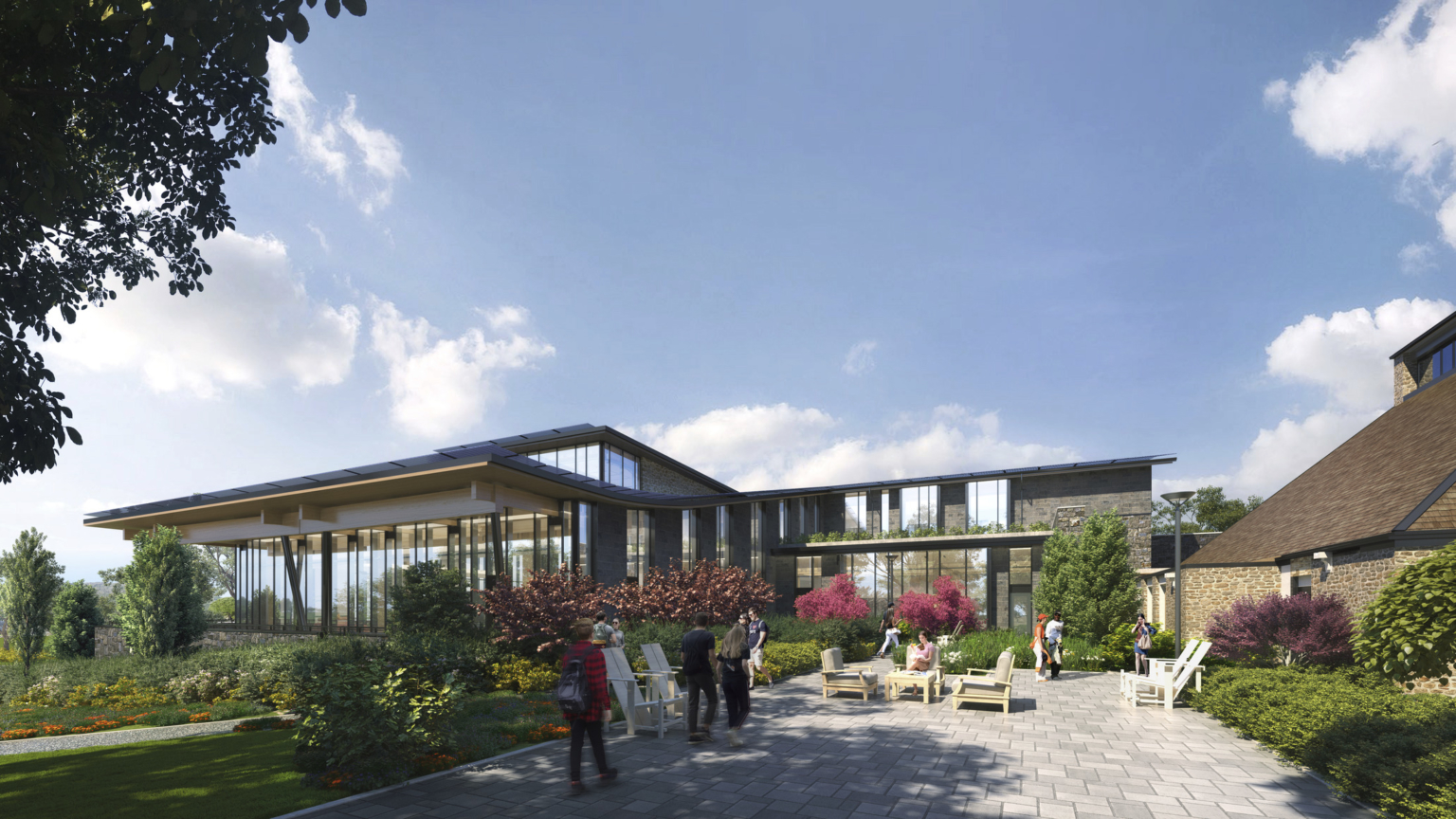
Providing useful outdoor gathering space will be a great asset to the campus.
Net Zero Dining
Swarthmore College aims to be a global leader in sustainability. Its sustainable framework aspires for the campus to achieve net zero – carbon, energy, and waste – by 2030. In support of these goals, we have worked with Swarthmore College to design a multi-platform dining venue that uses all electric equipment and on-site renewable energy. After benchmarking the energy use intensity of other dining facilities, the design team found the typical kitchen operates at an average EUI of 500kBtu/SF each year. This project is targeting an EUI of 300 kBtu/SF/yr for the kitchen, and 50 kBtu/SF/yr for non-kitchen functions. Overall, this should average an annual performance of 85 kBtu/SF.
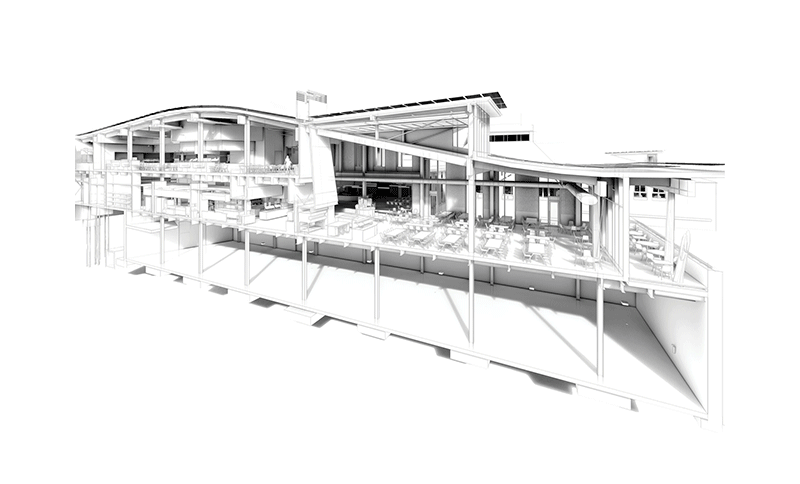
This project offers the opportunity to innovate and push the boundaries of sustainable design influencing the campus, region, and world.

A proposed solar photovoltaics layout for 400kW system.
